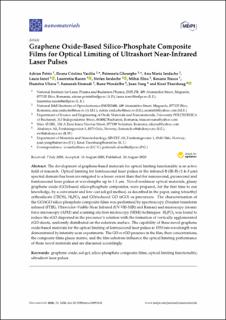| dc.contributor.author | Petris, Adrian | |
| dc.contributor.author | Vasiliu, Ileana Cristina | |
| dc.contributor.author | Gheorghe, Petronela | |
| dc.contributor.author | Iordache, Ana Maria | |
| dc.contributor.author | Ionel, Laura | |
| dc.contributor.author | Rusen, Laurentiu | |
| dc.contributor.author | Iordache, Stefan | |
| dc.contributor.author | Elisa, Mihai | |
| dc.contributor.author | Trusca, Roxana | |
| dc.contributor.author | Ulieru, Dumitru | |
| dc.contributor.author | Etemadi, Samaneh | |
| dc.contributor.author | Wendelbo, Rune | |
| dc.contributor.author | Yang, Juan | |
| dc.contributor.author | Thorshaug, Knut | |
| dc.date.accessioned | 2021-08-19T11:35:46Z | |
| dc.date.available | 2021-08-19T11:35:46Z | |
| dc.date.created | 2021-03-21T19:44:53Z | |
| dc.date.issued | 2020 | |
| dc.identifier.citation | Nanomaterials. 2020, 10:1638 (9), 1-20. | en_US |
| dc.identifier.issn | 2079-4991 | |
| dc.identifier.uri | https://hdl.handle.net/11250/2770291 | |
| dc.description.abstract | The development of graphene-based materials for optical limiting functionality is an active field of research. Optical limiting for femtosecond laser pulses in the infrared-B (IR-B) (1.4–3 μm) spectral domain has been investigated to a lesser extent than that for nanosecond, picosecond and femtosecond laser pulses at wavelengths up to 1.1 μm. Novel nonlinear optical materials, glassy graphene oxide (GO)-based silico-phosphate composites, were prepared, for the first time to our knowledge, by a convenient and low cost sol-gel method, as described in the paper, using tetraethyl orthosilicate (TEOS), H3PO4 and GO/reduced GO (rGO) as precursors. The characterisation of the GO/rGO silico-phosphate composite films was performed by spectroscopy (Fourier-transform infrared (FTIR), Ultraviolet–Visible-Near Infrared (UV-VIS-NIR) and Raman) and microscopy (atomic force microscopy (AFM) and scanning electron microscopy (SEM)) techniques. H3PO4 was found to reduce the rGO dispersed in the precursor’s solution with the formation of vertically agglomerated rGO sheets, uniformly distributed on the substrate surface. The capability of these novel graphene oxide-based materials for the optical limiting of femtosecond laser pulses at 1550 nm wavelength was demonstrated by intensity-scan experiments. The GO or rGO presence in the film, their concentrations, the composite films glassy matrix, and the film substrate influence the optical limiting performance of these novel materials and are discussed accordingly. | en_US |
| dc.language.iso | eng | en_US |
| dc.publisher | MDPI | en_US |
| dc.rights | Navngivelse 4.0 Internasjonal | * |
| dc.rights.uri | http://creativecommons.org/licenses/by/4.0/deed.no | * |
| dc.subject | ultrashort laser pulses | en_US |
| dc.subject | optical limiting functionality; | en_US |
| dc.subject | silico-phosphate composite films; | en_US |
| dc.subject | sol-gel; | en_US |
| dc.subject | graphene oxide; | en_US |
| dc.title | Graphene oxide-based silico-phosphate composite films for optical limiting of ultrashort near-infrared laser pulses | en_US |
| dc.type | Peer reviewed | en_US |
| dc.type | Journal article | en_US |
| dc.description.version | publishedVersion | en_US |
| dc.rights.holder | © 2020 by the authors. Licensee MDPI, Basel, Switzerland. This article is an open access article distributed under the terms and conditions of the Creative Commons Attribution (CC BY) license (http://creativecommons.org/licenses/by/4.0/). | en_US |
| dc.source.pagenumber | 1-20 | en_US |
| dc.source.volume | 10:1638 | en_US |
| dc.source.journal | Nanomaterials | en_US |
| dc.source.issue | 9 | en_US |
| dc.identifier.doi | 10.3390/nano10091638 | |
| dc.identifier.cristin | 1899711 | |
| cristin.ispublished | true | |
| cristin.fulltext | original | |
| cristin.qualitycode | 1 | |

